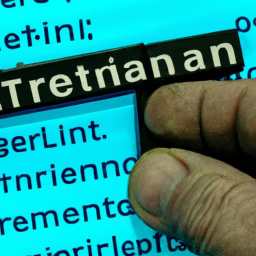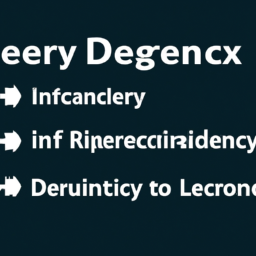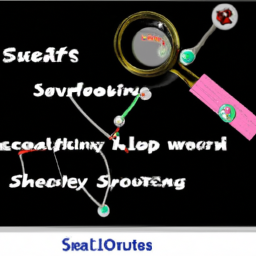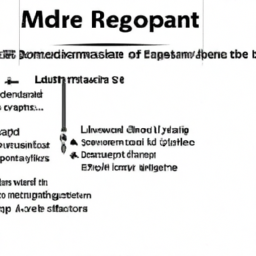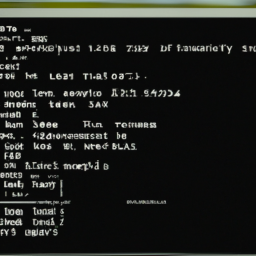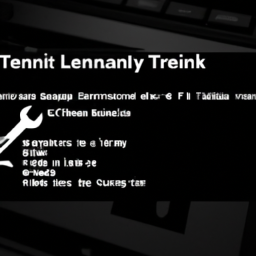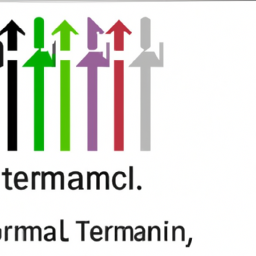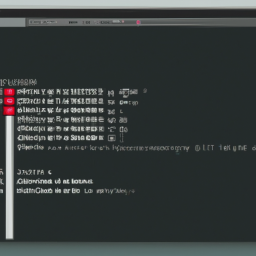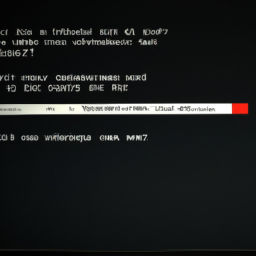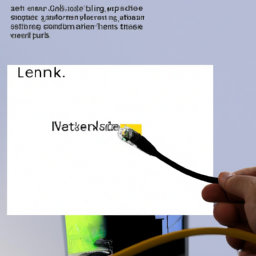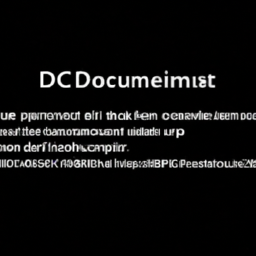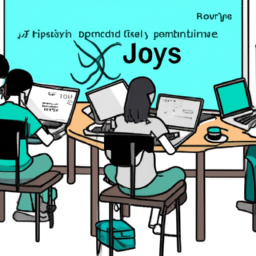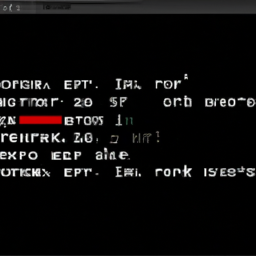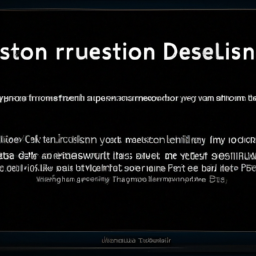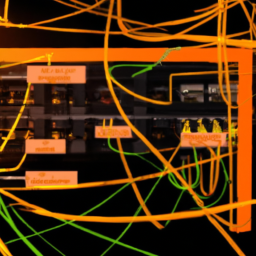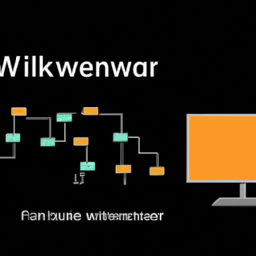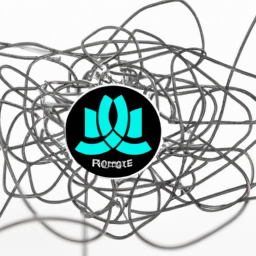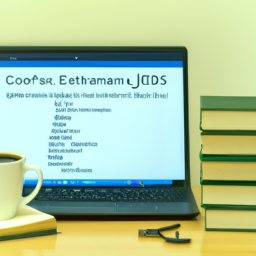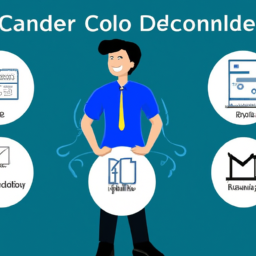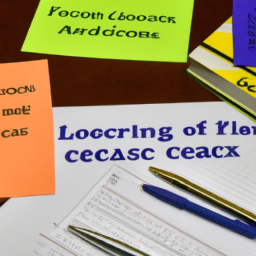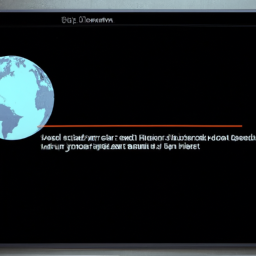Are you tired of encountering package dependency errors while using Linux? These errors can be frustrating, causing your system to malfunction and hindering your productivity. But fear not, for we have the strategies and solutions you need to handle these conflicting package dependency errors effectively.
In this article, we will delve into the intricacies of package dependency errors and provide you with step-by-step guidance on how to resolve them. By understanding the nature of these errors, updating your package manager, and repositories, and utilizing conflict resolution capabilities of package managers, you can overcome these challenges.
Sometimes, resolving conflicting dependencies may require manual intervention, removing conflicting packages, and reinstalling dependencies. We will guide you through these processes, ensuring your system is stable and functioning optimally.
Additionally, we encourage you to seek help from the vibrant Linux community and forums. With their expertise and support, you can tackle even the most stubborn package dependency errors.
Get ready to conquer these errors and regain control over your Linux system. Let’s dive into the world of handling conflicting package dependency errors in Linux and discover effective strategies and solutions.
Key Takeaways
- Understanding the causes of package dependency errors is crucial for troubleshooting.
- Regularly updating the package manager and repositories can often resolve dependency errors.
- Analyzing software versions and finding alternative solutions can help resolve conflicting dependencies.
- Engaging with the Linux community and forums can provide valuable advice and guidance for resolving package dependency errors.
Understand the Nature of Package Dependency Errors
Are you struggling with package dependency errors in Linux? Let’s dive into understanding the nature of these errors and find effective solutions together!
Package dependency errors occur when a package you’re trying to install or update requires other packages that are either missing or have conflicting versions. These errors can be caused by various factors such as outdated package managers, conflicting dependencies between different packages, or incompatible software versions.
Troubleshooting these errors requires a systematic approach. You can start by analyzing the error message to identify the potential causes. Then, you can use troubleshooting techniques like checking for missing dependencies, resolving conflicts by removing conflicting packages, or manually installing the required dependencies.
Updating your package manager and repositories can often resolve package dependency errors by ensuring that you have the latest software versions and compatible packages.
Now, let’s move on to the next section about updating your package manager and repositories.
Update Your Package Manager and Repositories
Make sure to keep your package manager and repositories up to date because who needs those pesky dependency issues when you can just stay blissfully unaware? Updating your package manager and repositories regularly is crucial for troubleshooting common package update issues and managing package conflicts in Linux.
By updating your package manager, you ensure that you have the latest version, bug fixes, and security patches, which can help resolve any conflicts that may arise due to outdated packages. Additionally, updating your repositories allows you to access the most recent software versions and dependencies available.
This ensures that your system is using the latest compatible packages, reducing the chances of encountering conflicts. By staying on top of updates, you can minimize the likelihood of encountering dependency errors and ensure a smooth experience.
Now, let’s delve into the next section on how to resolve conflicting dependencies manually.
Resolve Conflicting Dependencies Manually
To overcome conflicting dependencies manually, you’ll need to carefully analyze the software versions and dependencies on your system. This involves identifying the problematic packages and their dependencies, and then finding alternative solutions or updating the conflicting packages to compatible versions.
One approach is to use the dpkg command in Debian-based systems or the rpm command in Red Hat-based systems to force the installation or removal of specific packages. However, this method can be risky and may lead to further issues if not done correctly.
Another option is to compile the software from source, which allows you to specify the exact versions and dependencies needed. This can be time-consuming and complex, especially for larger software packages.
Automating dependency resolution is another possibility. Tools like aptitude or yum can help resolve conflicts by offering alternative packages or suggesting solutions. These tools analyze the dependencies and propose the best course of action.
To make the process easier, it is recommended to use package managers with conflict resolution capabilities. These package managers can automatically handle conflicting dependencies and ensure that the software is installed correctly without manual intervention.
Transitioning to the subsequent section about ‘use package managers with conflict resolution capabilities’, it is important to explore these options to simplify the resolution process and avoid manual errors.
Use Package Managers with Conflict Resolution Capabilities
One interesting statistic is that package managers with conflict resolution capabilities can reduce the time spent on resolving dependencies by up to 50%.
These package managers offer features like package rollback and automated dependency resolution to effectively manage conflicting dependencies. Package rollback allows you to revert to a previous version of a package if a conflict arises, ensuring that your system remains stable.
Automated dependency resolution, on the other hand, explores tools for handling conflicts in package managers. These tools analyze the dependencies of each package and find the best possible combination that satisfies all requirements. This eliminates the need for manual intervention and saves a significant amount of time.
In the next section, we will discuss the strategy of removing conflicting packages and reinstalling dependencies.
Remove Conflicting Packages and Reinstall Dependencies
You can efficiently address issues by removing conflicting packages and reinstalling the necessary dependencies. This approach allows you to resolve package dependency conflicts and ensure the smooth functioning of your Linux system. By removing the conflicting packages, you eliminate any conflicting files or dependencies that may be causing the issue. Once removed, you can then reinstall the necessary dependencies to ensure that all required packages are properly installed and compatible.
To help you understand the impact of this approach, consider the following table:
| Before | Conflicting Packages | After |
|---|---|---|
This table demonstrates the transition from a state of conflicting packages to a state where the conflict has been resolved. By following this method, you not only address the immediate issue but also lay the groundwork for preventing future conflicts. Once you have successfully resolved the conflicts, you can proceed with seeking help from the Linux community and forums to further troubleshoot any remaining issues.
Seek Help from the Linux Community and Forums
Now that you’ve tried removing conflicting packages and reinstalling dependencies, it’s time to seek help from the Linux community and forums. Engaging with experienced Linux users can provide valuable advice and guidance in handling package dependency errors.
The Linux community is known for its collaborative nature and willingness to assist fellow users. By seeking advice, you can tap into the collective knowledge and expertise of the community, increasing your chances of finding effective solutions to your package dependency conflicts.
Additionally, forums dedicated to troubleshooting techniques can offer valuable tips for identifying and resolving these conflicts. These techniques can range from using package managers to force installation, downgrading packages, or manually resolving dependencies.
Remember, the Linux community is there to support you in overcoming any challenges you may encounter.
Frequently Asked Questions
Can I use multiple package managers to resolve conflicting package dependency errors?
Yes, you can use multiple package managers simultaneously to resolve conflicting package dependency errors. However, there are both pros and cons to this approach.
On the positive side, using multiple package managers allows you to access a wider range of software packages. However, it can also lead to complications, such as conflicting package versions and dependency resolution issues.
To manage conflicting dependencies in a multi package manager environment, it’s best to follow certain practices like prioritizing one package manager, carefully managing repositories, and regularly updating and synchronizing packages across all managers.
Are there any tools or utilities available to automatically resolve conflicting package dependencies?
Yes, there are tools and utilities available that can automatically resolve conflicting package dependencies. One such tool is automated dependency resolution, which uses AI to help identify and resolve conflicts. It can detect when there are conflicting dependencies and automatically find a solution.
This eliminates the need for manual intervention and streamlines the process of resolving package dependency errors. By utilizing these tools, you can save time and ensure that your system has the necessary dependencies without any conflicts.
What should I do if the package manager is unable to find a solution for conflicting dependencies?
If the package manager is unable to find a solution for conflicting dependencies, you may need to resort to manual resolution. Start by investigating the truth of a theory to understand the root cause of the conflicts.
Then, you can manually resolve these errors by identifying and removing conflicting packages, installing compatible versions, or using alternative repositories.
If you’re still unable to resolve the conflicts, seek help from online forums, community support, or the package’s official documentation.
How can I prevent package dependency errors from occurring in the first place?
To prevent package dependency errors and conflicts, you can follow a few strategies.
First, always ensure you have the latest version of your package manager and operating system.
Additionally, carefully review the dependencies of the packages you want to install and make sure they’re compatible with your system.
Regularly update and upgrade your packages to ensure you have the latest versions with resolved dependencies.
Lastly, consider using tools like virtual environments or containers to isolate dependencies and avoid conflicts.
Is it possible to have conflicting dependencies within the same package or library?
Conflicting dependencies within the same package or library can have a significant impact on software stability. When different versions of the same dependency are required by different components, conflicts can arise. This can lead to unpredictable behavior, errors, and even crashes.
Version control plays a crucial role in managing package dependencies by ensuring that the correct versions are installed and that conflicts are resolved. By carefully managing dependencies and utilizing version control tools, you can maintain the stability and integrity of your software.
Conclusion
In conclusion, handling conflicting package dependency errors in Linux can be a complex task, but with the right strategies and solutions, it’s possible to overcome these challenges.
By understanding the nature of package dependency errors and updating your package manager and repositories, you can ensure a smoother installation process.
Additionally, resolving conflicting dependencies manually or using package managers with conflict resolution capabilities can help resolve any issues.
In rare cases, removing conflicting packages and reinstalling dependencies may be necessary.
It’s important to remember that seeking help from the Linux community and forums can provide valuable insights and solutions.
While this process may require some technical knowledge, with patience and perseverance, you can successfully resolve package dependency errors.




